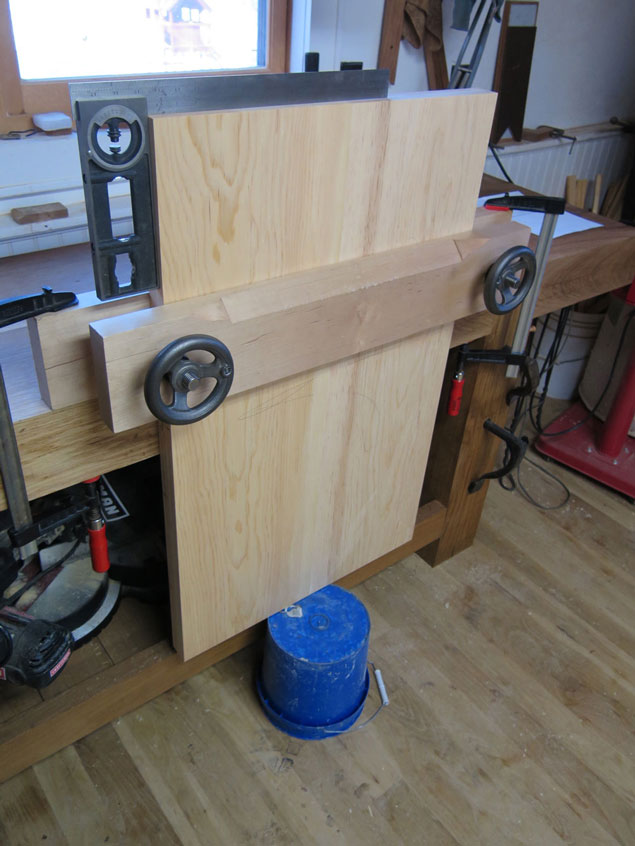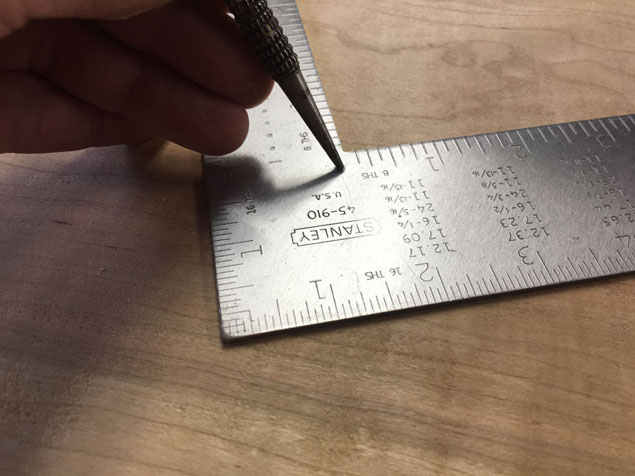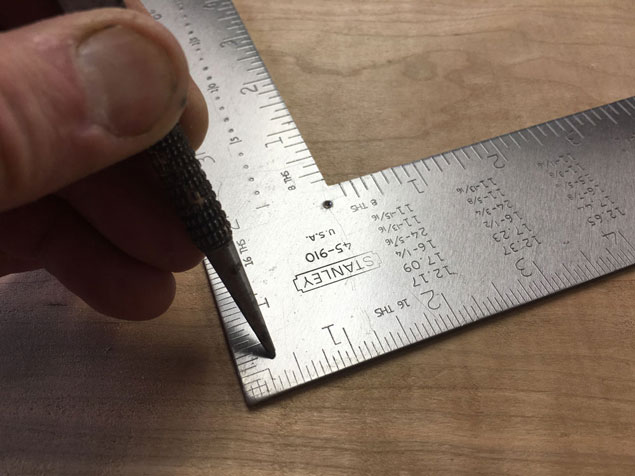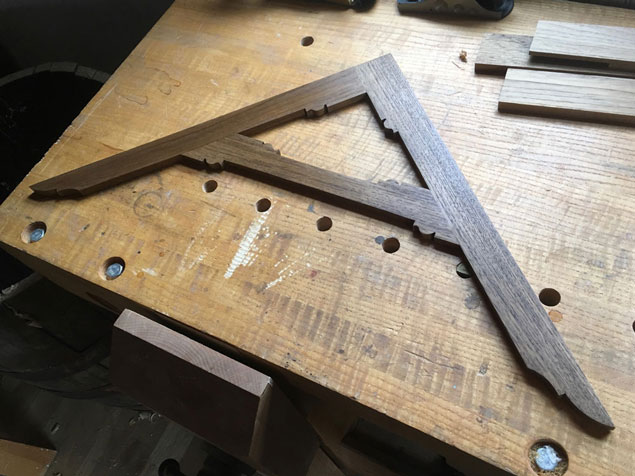We may receive a commission when you use our affiliate links. However, this does not impact our recommendations.
When you’re building casework, your parts really need dead square ends if you hope to fit drawers, dividers or a gallery inside.
I don’t trust any table saw gizmo to give me square cuts. And I don’t trust my shooting board, either. The only thing I trust is a square that has been tested for accuracy.
To check my carcase parts, I have a couple of huge Starrett squares that are pure indulgence – one of them I picked up for cheap because the seller was trying to make a quick sale. The other I bought to reward myself for completing the writing on a book.
But you don’t need these fancy squares to do fancy work. For years I used two other cheap options to confirm my cuts were square: An inexpensive framing square from the home center or a wooden square I made.
I prefer the wooden square because it’s easy to true it up with a block plane if it goes out of truth.
The framing square is my second choice. Most of them are reasonably square from the store, but you can correct them with a punch or nail set if they are out of square. You do this by punching at the corner where the two legs meet.
If the square is less than 90°, punch near the inside corner. This spreads the legs out. If the square is greater than 90° you punch near the outside corner, this pushes the legs in toward each other.
Some framing squares are easy to adjust; some will resist this operation. I haven’t found a pattern that explains why this is the case, I’m afraid.
Another option is to make a square from Plexiglas. The factory-cut sheets are usually dead square. If they aren’t, glue on a wooden handle to one edge and adjust the handle so it reads square.
No matter which way you go, get used to using the square before you dovetail anything together. It will save you from grief time and again.
— Christopher Schwarz
Here are some supplies and tools we find essential in our everyday work around the shop. We may receive a commission from sales referred by our links; however, we have carefully selected these products for their usefulness and quality.














Sometimes if I had to dead set flat possible, I was former tool and die maker metal and wood aren’t same surface so treat gently on wood….
But there must be a reference to check your squares against. The tricks of drawing a line and flipping the square over and redrawing is only accurate to a point. So how do you know whether you have trued a wooden square correctly or peened a a framing square to exactly 90 degrees. My approach was to buy an engineers square from a company that was known to make good ones (Rabone Chesterman) and hope. I have read that the best reference is a cylinder on a granite plate but this can cost hundreds of dollars.
I have a devil of a time trying to get anything over 14″ or so dead square. My Kung Fu is not yet that good.
Have you ever made a wooden square to measure outside edges (like your first photo)?